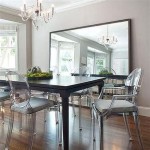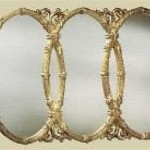Vanity Mirror Hardware: A Comprehensive Guide
Vanity mirror hardware plays a crucial role in both the functionality and aesthetics of a bathroom. From supporting the mirror's weight to adding a touch of style, the right hardware can significantly enhance the overall look and feel of the space. Understanding the different types, materials, and installation processes is essential for making informed decisions when choosing vanity mirror hardware.
One of the most common types of vanity mirror hardware is the clip. Clips are designed to grip the edges of the mirror and secure it to the wall. They come in various shapes, sizes, and finishes, allowing for customization to match different bathroom styles. Some clips are simple and minimalist, while others feature decorative elements for a more ornate look. Choosing the right clip depends on the mirror's size, thickness, and the desired aesthetic.
Another popular option is the J-bar. J-bars are metal brackets shaped like the letter "J." The longer arm of the "J" is attached to the wall, while the shorter arm supports the bottom edge of the mirror. J-bars offer a secure and stable mounting solution, particularly for heavier mirrors. They also provide a subtle, modern look, making them a versatile choice for various bathroom designs.
D-rings and straps are another common hardware choice, particularly for larger or heavier mirrors. D-rings are attached to the back of the mirror, and straps are then looped through the rings and anchored to the wall. This system distributes the weight evenly, providing a secure and reliable mounting solution. Leather straps can offer a classic, rustic feel, while metal straps contribute to a more contemporary aesthetic.
Beyond these primary types, numerous specialized hardware options exist for unique mirror installations. These include offset clips for mirrors with beveled edges, adjustable brackets for uneven walls, and decorative rosettes to conceal mounting screws and add an elegant touch. Exploring these specialized options can provide solutions for specific design challenges and enhance the overall aesthetic.
The material of the vanity mirror hardware is another critical consideration. Common materials include brass, chrome, nickel, stainless steel, and oil-rubbed bronze. Brass and chrome offer a classic, polished look, while nickel provides a slightly warmer tone. Stainless steel is known for its durability and resistance to corrosion, making it an excellent choice for humid bathroom environments. Oil-rubbed bronze offers a more rustic, antique appearance.
Beyond the aesthetic considerations, the material's durability and resistance to moisture are paramount in a bathroom setting. High-quality finishes protect the hardware from rust and corrosion, ensuring longevity and maintaining its appearance. Choosing hardware specifically designed for bathroom use is crucial to withstand the humidity and moisture inherent in this environment.
Proper installation is essential for the safety and longevity of the vanity mirror. Before installation, it's crucial to carefully measure and mark the desired mirror placement. Using the correct type and size of fasteners for the wall material is also essential. For heavier mirrors, using wall anchors is recommended to provide additional support and prevent the mirror from falling. Following manufacturer instructions and using appropriate tools ensures a secure and stable installation.
When selecting vanity mirror hardware, consider the overall style of the bathroom. Modern bathrooms often benefit from minimalist hardware in chrome or brushed nickel. Traditional bathrooms might complement hardware with ornate details in brass or oil-rubbed bronze. Matching the hardware finish to other fixtures in the bathroom, such as faucets and towel bars, creates a cohesive and polished look. Considering the size and shape of the mirror is also important. Larger mirrors may require heavier-duty hardware, while smaller mirrors can accommodate more delicate options.
Maintenance of vanity mirror hardware is relatively straightforward. Regular cleaning with a soft, damp cloth removes dust and prevents buildup. Avoid using harsh chemicals or abrasive cleaners, as these can damage the finish. Periodically inspecting the hardware for signs of wear or loosening is also recommended. Tightening screws or replacing worn-out parts ensures the mirror remains securely mounted and maintains its appearance over time.
Choosing the right vanity mirror hardware involves considering several factors, including the mirror's size and weight, the desired aesthetic, and the bathroom's overall style. Understanding the different types of hardware, materials, and installation processes allows for informed decisions that enhance both the functionality and beauty of the bathroom space. Careful selection and proper installation contribute to a secure, stylish, and long-lasting vanity mirror setup.

Pivot Mirror Hinges Paxton Hardware

Custom Bathroom Mirror Hardware

Klajowp 36 In W X 24 H Small Rectangular Framed Wall Mounted Bathroom Vanity Mirror Black Rm01 6090 120 The Home Depot

Signature Hardware Talyn 24 X 33 Mahogany Vanity Mirror Light Walnut

Signature Hardware 450601 Solandra Decorative Vanity Build Com

Glacier Bay Mirror Mounting Hanging Hardware Kit 805254 The Home Depot

Signature Hardware 442688 Sethfield 29 X 40 Iron Framed Build Com

Embellish Your Home With Stunning Mirrors From Restoration Hardware Bathroom Vanity

Bathroom Mirror With Barn Door Hardware Bella Tucker

How To Frame A Bathroom Mirror Over Plastic Clips Somewhat Simple








